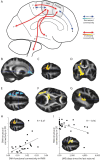Idiopathic Generalized Epilepsy: Misunderstandings, Challenges, and Opportunities
- PMID: 38165295
- PMCID: PMC11097769
- DOI: 10.1212/WNL.0000000000208076
Idiopathic Generalized Epilepsy: Misunderstandings, Challenges, and Opportunities
Abstract
The idiopathic generalized epilepsies (IGE) make up a fifth of all epilepsies, but <1% of epilepsy research. This skew reflects misperceptions: diagnosis is straightforward, pathophysiology is understood, seizures are easily controlled, epilepsy is outgrown, morbidity and mortality are low, and surgical interventions are impossible. Emerging evidence reveals that patients with IGE may go undiagnosed or misdiagnosed with focal epilepsy if EEG or semiology have asymmetric or focal features. Genetic, electrophysiologic, and neuroimaging studies provide insights into pathophysiology, including overlaps and differences from focal epilepsies. IGE can begin in adulthood and patients have chronic and drug-resistant seizures. Neuromodulatory interventions for drug-resistant IGE are emerging. Rates of psychiatric and other comorbidities, including sudden unexpected death in epilepsy, parallel those in focal epilepsy. IGE is an understudied spectrum for which our diagnostic sensitivity and specificity, scientific understanding, and therapies remain inadequate.
Conflict of interest statement
The authors report no relevant disclosures. Go to
Figures




References
MeSH terms
Substances
Supplementary concepts
LinkOut - more resources
Full Text Sources
